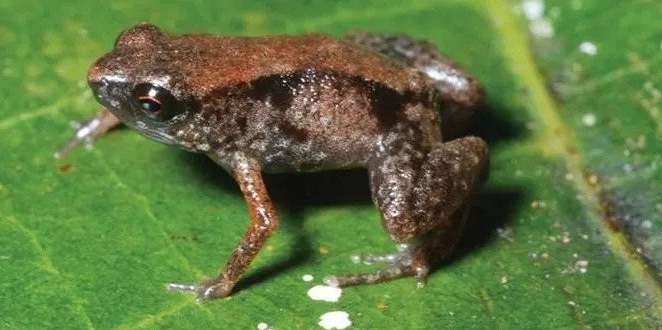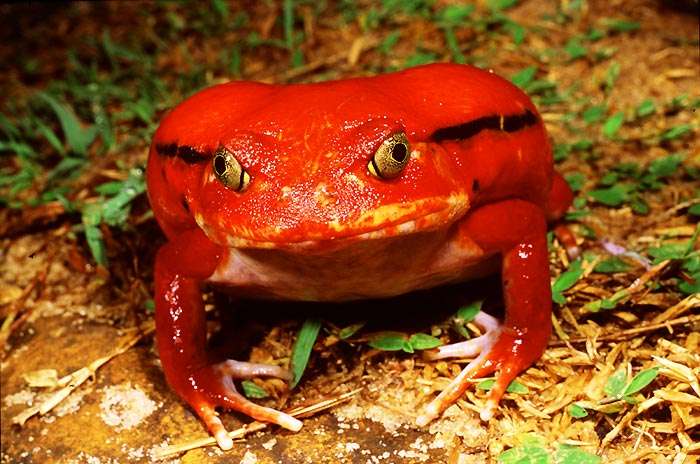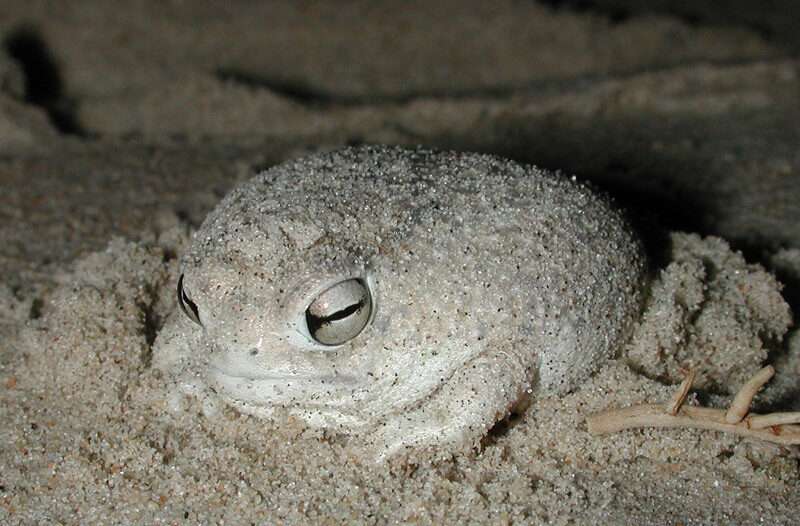
A species of microhylid frog called Paedophryne amauensis is exclusive to eastern Papua New Guinea. It is regarded as the tiniest known vertebrate in the entire known universe, measuring 7.7 mm (0.30 in) from snout to vent. The International Institute for Species Exploration declared Paedophryne amauensis, the tiniest vertebrate known, as one of the year’s newest species. The little frog has a leap capacity of 30 times its length.
Traits
P. amauensis is a little smaller than fish like Paedocypris progenetica and Schindleria brevipinguis, reaching an average body size of only 7.7 mm. All of these creatures are, however, measured from the top of their heads to the bottoms of their rump; the measurement does not account for body weight. While measurements of Schindleria brevipinguis demonstrate that they weigh less than 2 mg (7.1105 oz.), with one adult specimen measuring just 0.7 milligrams, the frog’s body weight is listed in the Guinness Book of World Records at 10 milligrams (0.00035 oz).
The frog’s life cycle does not contain a tadpole stage because it is a land animal. Members of this species hatch instead as “hoppers,” which are smaller versions of the adults. There are just seven presacral vertebrae left because of the skeleton’s reduction. They can jump thirty times as high as they are tall. The frog feeds at night and consumes small invertebrates. Males mate selection calls are a sequence of extremely high-pitched, insect-like peeps that occur between 8400 and 9400 Hz.
Habitat
P. amauensis can be found between 177 and 800 m (581-2,625 ft) above sea level in tropical wet lowland and hill forest. The Paedophryne amauensis is reliant on the high moisture content of leaf litter and is susceptible to water loss because of its high surface to volume ratio. Members of this frog reside among the leaf litter on the forest floors of tropical forests, just like all other Paedophryne species that have been identified to date.

Diet
Acarians and collembolans are only two examples of the tiny invertebrate species that Paedophryne amauensis consume. P. amanuensis are probably a key component of the tropical wet-forest ecosystems due to their tiny size and reasonably abundant abundance.
Reproduction
Crepuscular and terrestrial, these frogs. P. amanuensis lives among the leaf litter of tropical wet forests like the majority of miniature frogs to make up for their water loss sensitivity. It is also believed that they reproduce directly. However, since only males have been observed, little is known about how they reproduce. In comparison to their congeners, little frogs often lay fewer, larger eggs.
Table





